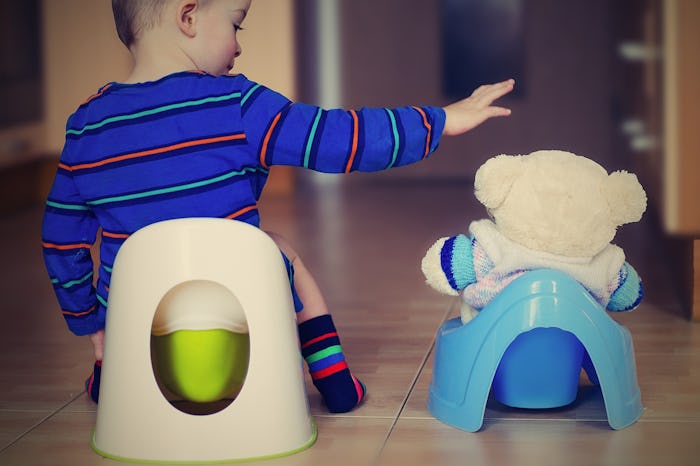Life

If Your Child Has Autism, Here's How Potty Training Apps Can Help
As a mom of a son with autism, I can tell you there's a lot to learn at every step of the way. Depending on where your child falls on the spectrum, the amount of intervention required to do the simplest of tasks can seem insurmountable. Potty training is often one of those things. Sometimes technology can help and recently, there's been a wave of autism-related toilet training apps developed, giving hope to struggling parents. But are the potty training apps for autism worth the money, or is it just another bit of data to get lost in your phone?
It's a documented fact that many children with autism benefit greatly from bold visual support and imagery when developing communication skills like those needed in potty training. According to Intervention in School and Clinic, dynamic, highly graphic input can help children relate to the real world with minimal distraction. This allows them to problem solve in ways which are comfortable for them. Essentially, this is the guiding idea behind the potty training apps for kids with autism, however, the design of the apps, the general research and development of their tech, is based largely on anecdotal evidence, and they often don't differ in any meaningful way from the apps for neurotypical children.
However, some of the apps, like AvaKid See Me Go Potty aren't so much potty training apps as they are communication applications. What they're doing is allowing your child to design their own avatar and use the app to direct themselves and their parents to cues that they might need to go to the bathroom. As per Autism Speaks, the "app allows your child to create a cartoon avatar that physically resembles him/herself, and then enables your child to repeatedly play the Go Potty narrative showing him/herself successfully complete the whole process of using the potty, step by step."
If your child is very young or isn't able to function at that level, this app is probably too complex, but the Potty Training Social Story from Touch Autism is more suited to a younger or less verbal/reading audience. It's highly stimulating, but designed not to overwhelm. It has a visual timer to remind the child (and you) that it's time to try to go to the bathroom, and the simplicity of the app is where it clicks. As per their website, "The social story helps children develop appropriate potty behavior by clearly describing going to the bathroom and what it involves. The illustrations in the story can also act as a model for your child."
I spoke with Occupational Therapist and PhD candidate in special education, Amber Pritchard, OTR/L CHT. She tells Romper that while these apps may benefit some parents, especially those with children who are higher functioning, they could also be a distraction. "If you have a child who is easily screen fixated, getting them to engage with a screen while they need to go to the bathroom may have the opposite effect."
But she notes that in the struggle to potty train, some kids may benefit from the cues on the screen. "We often use display cards and visual boards that children can use to point to their needs. These seem like they're working on the same basic premise, which may have some benefit."
In the end, she says it's probably best and easiest to strategize with your child's therapists and pediatrician, as well as the tools in your arsenal, to hopefully get your child to understand potty training and start using the toilet regularly. It might happen quickly, and it might take months — or never at all. But your team can help you evaluate the situation and determine the most appropriate methods to employ so your kid can have their best shot.
Check out Romper's new video series, Bearing The Motherload, where disagreeing parents from different sides of an issue sit down with a mediator and talk about how to support (and not judge) each other’s parenting perspectives. New episodes air Mondays on Facebook.